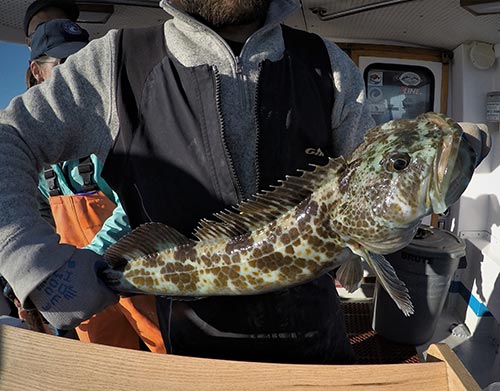Bodega Marine Laboratory Division
 What is CCFRP?
What is CCFRP?
In 2007, a series of 29 marine protected areas (MPAs) went into effect along the central California coast, representing approximately 204 square miles and roughly 18% of California’s state waters. The Marine Life Protection Act (est. 1999) requires scientific monitoring of these MPAs in order to evaluate their effectiveness as a tool for conservation and fisheries management. The California Collaborative Fisheries Research Program (CCFRP) was designed to do just that! To examine the effects of MPAs on local marine resources, CCFRP actively monitors MPAs and reference sites along the California Coast. Bodega Marine Laboratory division of CCFRP monitors two MPAs: Bodega Head SMR and Stewarts Point SMR.
Using standardized scientific methods, developed during a workshop that incorporated input from academic scientists, marine resource managers and members of local fishing communities, CCFRP collects data on nearshore fish populations to help evaluate the effectiveness of Marine Protected Areas (MPAs) as a tool for conservation and fisheries management. CCFRP collaborates with charter boats and local volunteer anglers to study fish populations both inside and outside of local MPAs (Stewarts Point SMR & Bodega Head SMR). CCFRP uses catch-and-release fishing to record the type (species), size (length), and number of fish caught. In addition, we tag and release fish to track their movement over time. With these data, we can determine whether any changes in fished and unfished populations are due to differences in the area, season, year, or level of protection which are important factors to understand when assessing the effectiveness of marine reserves.
By sampling the same areas and employing identical methods year after year, CCFRP will be able to detect long-term changes in nearshore fish populations from the region. Because CCFRP surveys began the same year that these MPAs were established, initial differences in fish sizes and/or abundances are accounted for, unbiasing any inherent differences between protected and unprotected areas prior to 2007. With continued sampling, CCFRP will be able to determine whether any changes in fished and unfished populations are due to differences in area, season, year or level of protection: important factors to take into account when assessing the effectiveness of marine reserves.
 CCFRP has several goals:
CCFRP has several goals:
- Conduct scientifically sound research to better inform resource managers
- Collaboratively work with local fishing communities to collect fisheries data
- Provide rigorous baseline/monitoring data for the evaluation of MPA performance
- Better understand nearshore fish stocks and the ecosystems upon which they rely
- Educate the public about marine conservation, stewardship and research
Join us!
We lead fishing trips each summer/fall to collect data for fisheries management and to monitor California Marine Protected Areas (MPAs). Our program seeks to bring together scientists, recreational anglers, and commercial fishing crews to better understand the ecological impact of our local marine reserves using catch-and-release sampling by hook-and-line fishing. We fish within and just outside of MPAs to evaluate their effectiveness as a conservation tool for groundfishes. Our aim is to keep everybody safe and to have fun while we collect useful data that will help us keep fisheries healthy for generations to come!
Volunteer anglers:
- Should have experience fishing in the marine environment
- Should be able to spend up to 10 hours per day on a recreational fishing boat, in potentially rough waters
- Must be 16 years or older
We generally conduct our sampling at both Bodega Head and Stewarts Point in August and September. To stay up-to-date and get information about our dates for the upcoming sampling season, please subscribe to our mailing list here.
For additional information please contact bodegamarineccfrp@gmail.com.
This project is generously supported by the Ocean Protection Council.

